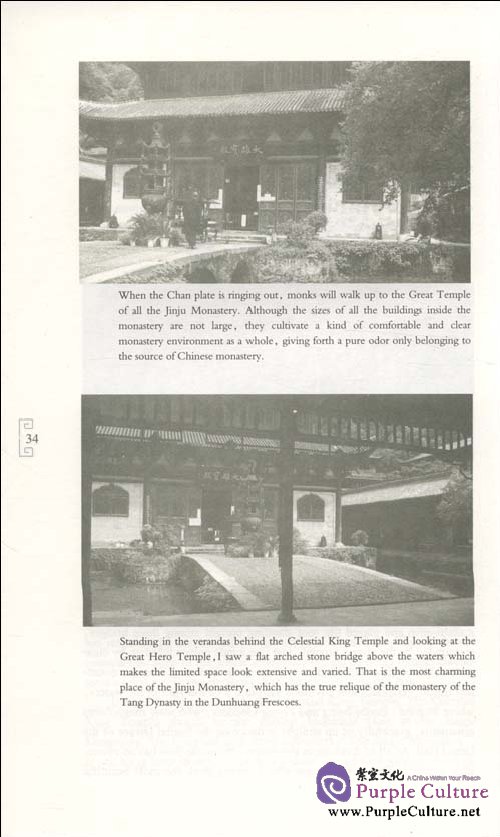Sample Pages Preview


People
in the world have difierent lifestyles,which are the same as those
called“monk”in the monastery,who in fact are also the same com-mon
people as we are.In the eyes of some people,they are
escapist,mystical,and even have some oddities.In reality,they also have
pleasure and dejection,as well as affection and expectations.If they
live in a monastery,the monastery will begin to have vitality,where the
light smoke rolling up brings out signs of human habitation.Their
insights are originally colorful.and the colors here have the life
trace.pleasure and dejection.What they are going to do is to dilute
those colors and make them too weak to be seen.Insisting and abnegating
should be the differ-ence between being inside Buddhism and being
outside Buddhism.
In the feudal era of China,social life should all
be brought into the hierarchical order.The class and order decided
superiority and in feriority.The concept of superiority and inferiority
was the key component of the ethic.Even Buddhism,a place out of the
world,was also brought into the hierarchical order.Not only the
relationship between the monasteries,but also the relationships between
the resident superintendents and the as sembly of monks,between the Chan
masters and the disciples and be-tween brothers had the same
classification of superiority and inferiority,the hierarchical order
as.in people’S normal life.If it iS said that the monastery is the place
for people to find spiritual consolation,and monks in the monastery are
the guides for the masses looking for spiritual libera-tion,then what
they do in their whole life is supposed to carry out one kind of
effective method,letting the method lead themselves and others enter
the“Buddhist realm”,where there is no sadness,no poverty,no cheat,but
only goodliness and wealth,that is the place called“The Land ofBliss in
the West”or The Eastem Paradise ofPure Lapiz Lazuli”The respect that
people give monks is from their yearnings for the world and their hopes
for getting guided.The most exalted Chan master is the Chan master who
can offer people the most direct,convenient and effective method.Their
behaviors are always enthroned at the hearts of followers.People
following the monk is similar to following the spiritual teacher.

